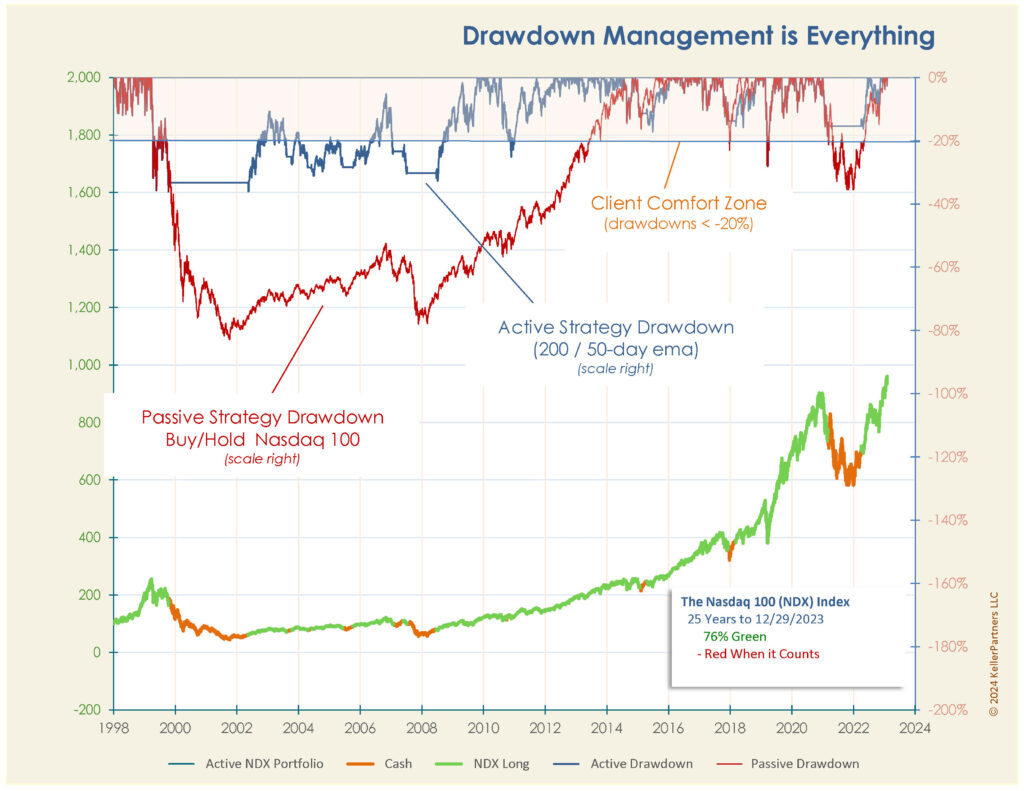
The Model. The KP Model remains Green – full policy exposure to US equities.
From the Trading Room. When it comes to investing for retirement, the biggest challenge for investors is the volatility of the underlying investments — generally stocks and mutual funds — which, historically is quite large. Typically, it will run two or three times the expected annual return.
For example, if we have a portfolio that has returned, say, 8% annually over the last 10 years, we can assume that the annual volatility of that investment ranged roughly from 15% to 25%.
That’s challenging enough for most investors, but what makes it almost impossible for them to stay with the program over the long haul is drawdown – the amount of temporary loss a portfolio might experience along the way. A Swiss banker once told me that, in his opinion, “drawdown is everything.”
Here at KP, our priorities are straightforward: we’re in business to manage drawdown and volatility. One could say that, in general, the only justification for active investment management is this pressing need to manage drawdown and volatility.
Yes, active management does come with a cost: shorter holding periods and transactions. On the other hand, active management promises critical benefits: a significant reductions in drawdown, a significant reduction in portfolio volatility and, over time, some modest improvement in returns as well. And, these benefits come with a high likelihood of success,
What’s more, it’s not even that much work. The graphic below reviews the remarkable effectiveness of what we call the KP Long-Term Model over the last 25 years (more than half of those results are in real time now). It also illustrates that our tools are especially effective when they manage volatile assets such as the Nasdaq 100 Index, the NDX.

This study is price-based (simply, a 50-day ema of the S&P 500-TR versus its 200-day ema). It shifts directions less than once a year, and is the least sophisticated element of our trend analysis process. Remarkably, it delivers most of what investors need: better returns, less volatility, and a high likelihood of protection against that life-altering portfolio loss.


